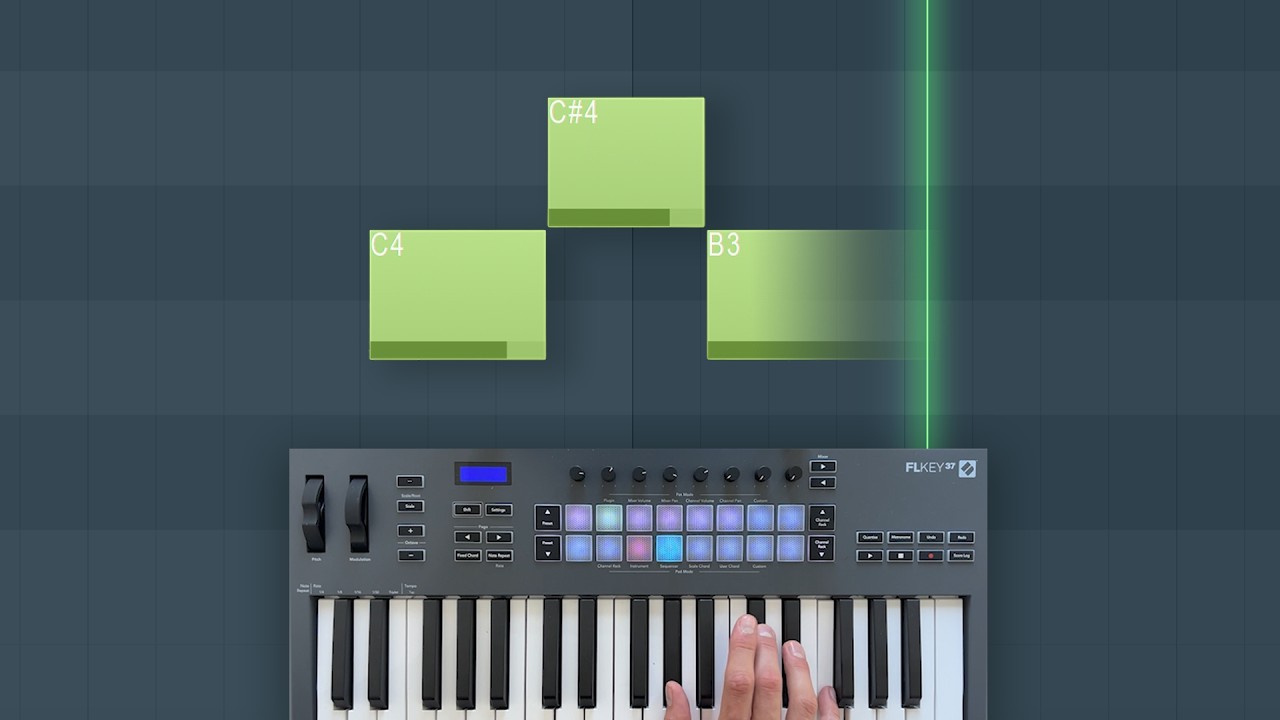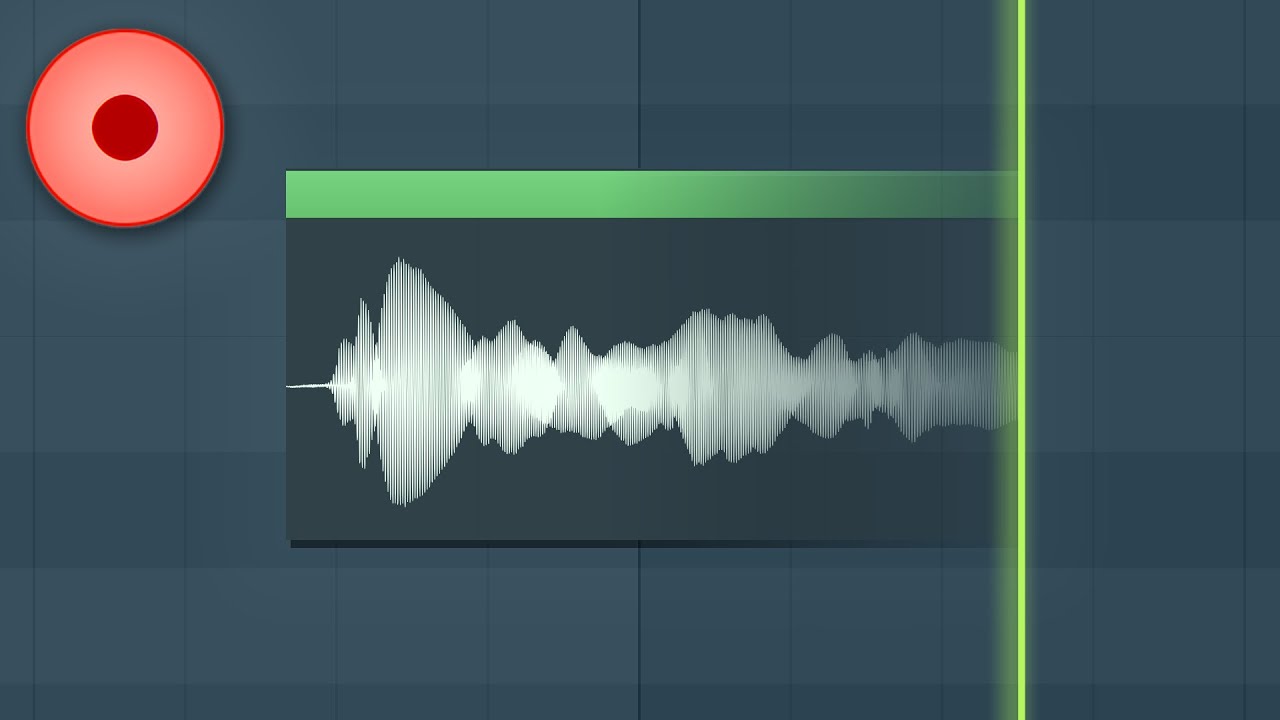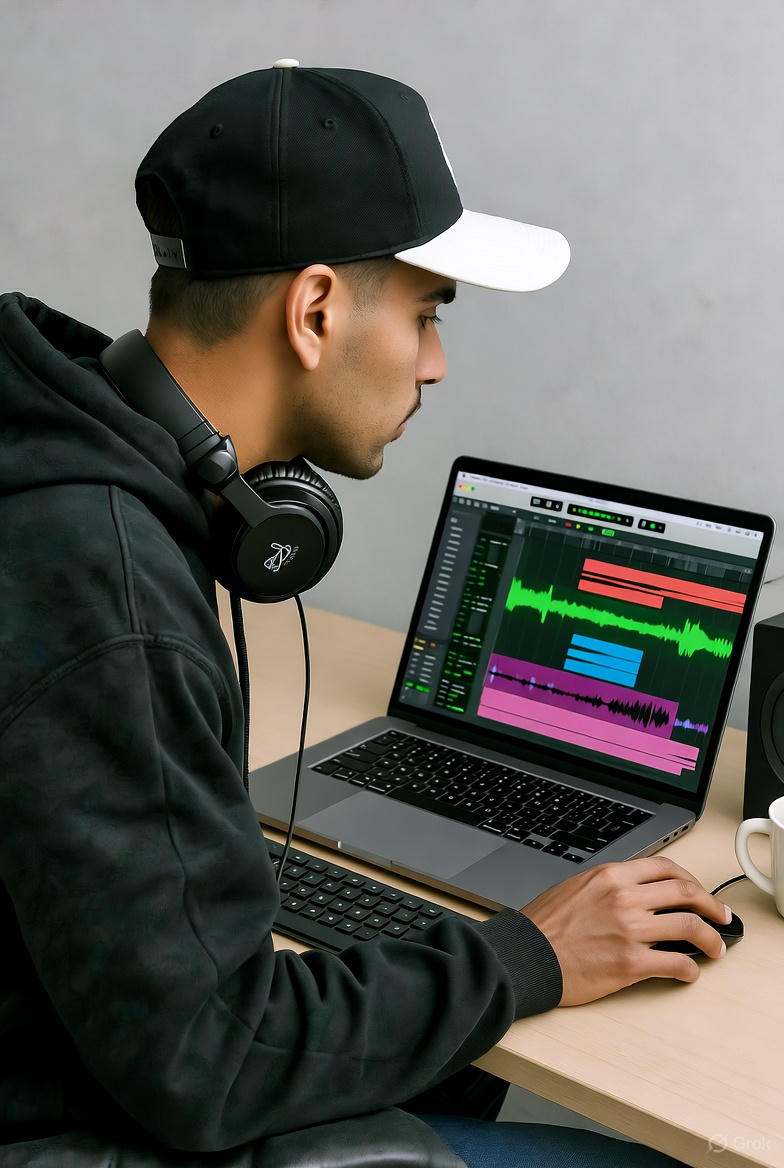!Let Us HELP YOU!
We have a lot of curated content on this blog.
Take this simple 20 second Quiz to Help You
Find The Exact Content You Are Looking For!
Beat making has become the backbone of everything from hip hop to electronic hits, giving songs their pulse and energy. More people than ever are diving in and the number of beat makers worldwide has surged by over 150 percent in the past five years. But most folks think you need expensive equipment or formal music training to get started. You might be surprised to find out that creativity and a simple laptop are often all it takes to shape a sound that stands out.
Table of Contents
Quick Summary
| Takeaway | Explanation |
| Understand the role of rhythm | The beat forms the foundational structure of music across genres, crucial for emotional expression. |
| Choose the right DAW for production | Operating software like Logic Pro or FL Studio is vital to effectively create and refine beats. |
| Invest in quality equipment | Essential hardware, such as MIDI controllers and audio interfaces, enhances sound production quality. |
| Learn music theory for depth | Understanding music theory aids in creating complex rhythms and melodies, elevating the overall composition. |
| Embrace collaboration for creativity | Working with others enhances skills and broadens musical perspectives, leading to innovative beat-making outcomes. |
Understanding the Basics of Beat Making
Beat making is an intricate art form that blends musical creativity with technical skill. At its core, beat making involves creating rhythmic foundations for musical compositions across various genres. While many people associate beat making primarily with hip hop and rap, the practice spans multiple musical styles including pop, electronic dance music, and R&B.
The Musical Architecture of Beats
A beat represents the fundamental rhythmic structure of a musical piece. Think of it as the heartbeat that drives the entire musical composition. Beats are constructed using multiple sonic elements like drum patterns, percussion sounds, bass lines, and melodic components. Professional beat makers carefully layer these sounds to create complex rhythmic landscapes that evoke specific emotional responses.
Learn more about creating unique beat styles with different techniques and approaches. The complexity of a beat depends on several critical factors:
-
Tempo (measured in beats per minute)
-
Rhythmic complexity
-
Sound selection and layering
-
Dynamic variation
Technical and Creative Dimensions
Successful beat making requires a blend of technical knowledge and creative intuition. Producers must understand music theory, sound design principles, and digital audio workstation (DAW) functionality. According to Britannica, beat music emerged as a revolutionary approach to musical composition, emphasizing rhythm and structural innovation.
While technical skills matter, the most compelling beats emerge from an artist’s unique musical perspective. Creativity transforms technical proficiency into genuine musical expression. Beat makers develop their signature style by experimenting with unconventional sound combinations, exploring different genre influences, and pushing traditional musical boundaries.
Understanding beat making is about recognizing it as both a technical craft and an art form that continuously evolves with technological advancements and musical trends.
Key Equipment and Software for Production
Building a solid beat making setup requires strategic investment in both hardware and software. Unlike traditional music production environments, modern beat makers can create professional quality tracks with relatively compact equipment. The key is understanding which tools provide the most versatility and creative potential.
Essential Digital Tools
Digital Audio Workstations (DAWs) form the central nervous system of beat production. These software platforms are where beats are conceptualized, constructed, and refined. Popular DAWs like Logic Pro, FL Studio, and Ableton Live offer unique workflows and features that cater to different production styles. According to research from the Incorporated Society of Musicians, selecting the right DAW is crucial for effective music production.
Check out our comprehensive audio equipment guide to understand more about professional beat making tools. The most effective production setups typically include:
To help readers quickly compare essential digital tools and hardware for beat making, the following table summarizes the key components and their primary purpose in the production process.
| Equipment/Software | Primary Purpose |
| Digital Audio Workstation (DAW) | Central software for composing, arranging, and editing beats |
| Computer | Provides processing power and memory for running production tasks |
| Audio Interface | Converts analog audio to digital, allows high-quality sound input/output |
| MIDI Controller | Enables real-time input of musical notes and rhythms |
| Studio Monitors/Headphones | Delivers accurate sound for precise mixing and production decisions |
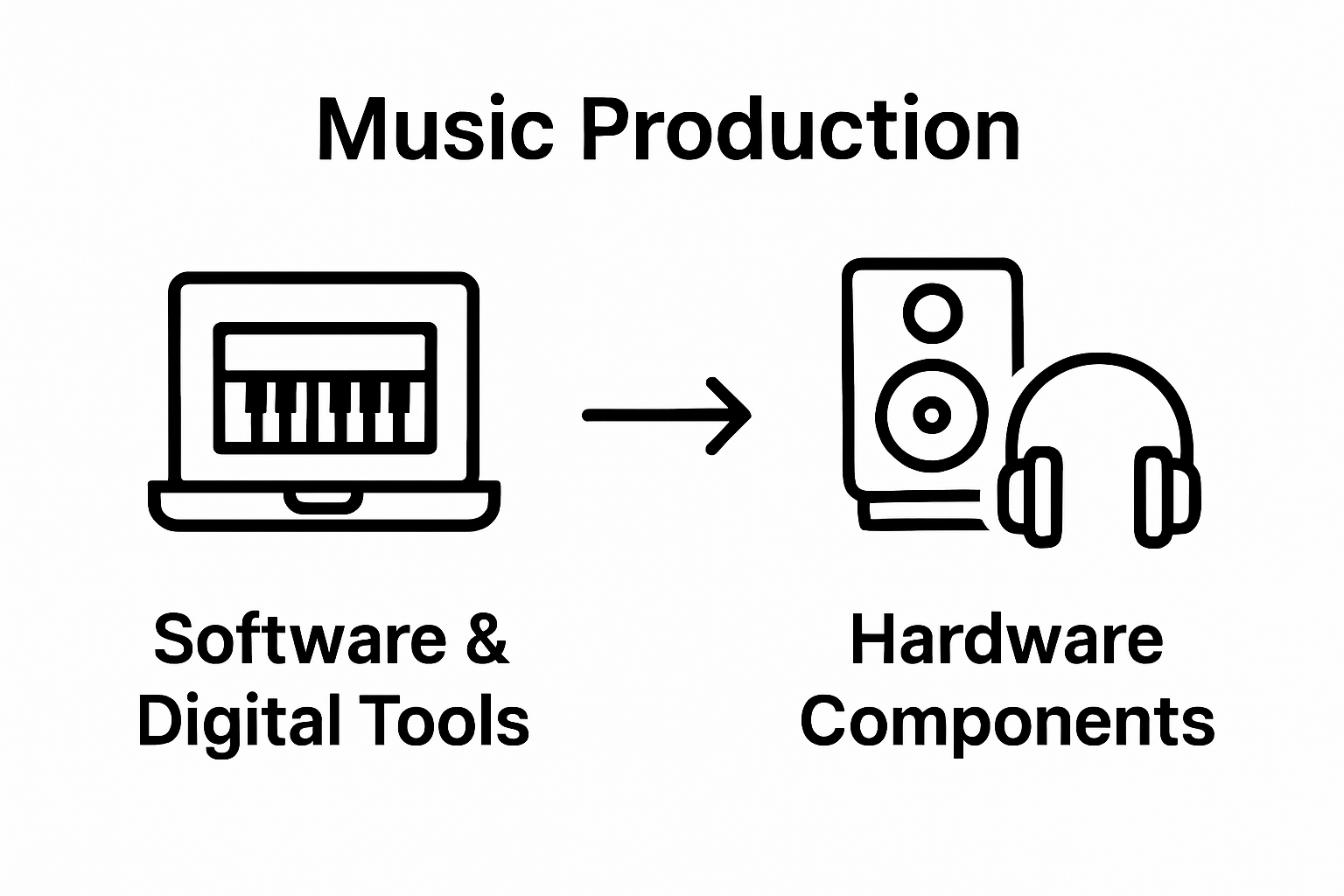
-
A powerful computer with robust processing capabilities
-
High-quality audio interface
-
Professional DAW software
-
MIDI controllers
-
Studio monitors or high-end headphones
Hardware Considerations
Beyond software, physical equipment plays a significant role in beat production quality. MIDI keyboard controllers allow producers to input musical notes and create intricate rhythmic patterns with precision. Audio interfaces convert analog sound signals into digital data, ensuring clean and accurate sound capture. Studio monitors provide accurate sound representation, allowing producers to hear nuanced details in their beats.
Professional beat makers understand that equipment is an investment.
While beginners can start with basic setups, serious producers gradually upgrade their tools to expand creative possibilities. The goal is not just acquiring expensive gear, but understanding how each piece of equipment contributes to the overall production workflow.
WEBSITE RESOURCES FOR MUSICIANS
Ultimately, beat making equipment is a personal journey. Your unique musical vision will guide which tools become most valuable in your creative process.
The Importance of Music Theory in Beat Creation
Music theory serves as the foundational blueprint for creating compelling and sophisticated beats. Far from being a restrictive set of rules, music theory provides beat makers with a comprehensive understanding of how musical elements interact and create emotional resonance.
Understanding Musical Structure
Music theory explains the underlying mathematical and emotional patterns that transform random sounds into meaningful musical experiences. It helps producers comprehend how different notes, rhythms, and harmonies work together to create engaging compositions. By understanding scales, chord progressions, and rhythmic patterns, beat makers can move beyond simple repetition and craft more complex, nuanced musical landscapes.
Learn advanced beat making techniques in our Logic Pro guide to see music theory principles in action. Key theoretical concepts that impact beat creation include:
This table outlines fundamental music theory concepts discussed in the article and their impact on beat creation, providing an at-a-glance reference for producers aiming to deepen their musical understanding.
| Music Theory Concept | Impact on Beat Creation |
| Harmonic Relationships | Shapes how notes and chords work together in a beat |
| Rhythmic Complexity | Allows creation of intricate, engaging rhythmic patterns |
| Melodic Development | Enables producers to craft moving and memorable melodies |
| Tonal Center/Key | Establishes the emotional mood and cohesion of the beat |
| Syncopation | Introduces rhythmic variation and dynamic interest |
-
Harmonic relationships between musical notes
-
Rhythmic complexity and syncopation
-
Melodic development and progression
-
Tonal center and key signatures
Practical Applications in Beat Production
According to research from the University of Oregon, understanding music theory enables producers to develop more expressive and sophisticated musical works. This knowledge allows beat makers to:
-
Create more intentional and emotionally compelling rhythms
-
Understand why certain musical combinations sound pleasing
-
Experiment with unconventional musical structures
-
Communicate more effectively with other musicians
Music theory transforms beat making from a purely technical process into an art form. While natural talent and intuition play significant roles, theoretical knowledge provides the tools to understand and manipulate musical elements with precision. Producers who invest time in learning music theory can develop unique sounds that stand out in a crowded musical landscape.
Ultimately, music theory is not about rigid adherence to rules, but about understanding the deep, interconnected language of music. It empowers beat makers to communicate complex emotions and ideas through rhythmic and harmonic expression.
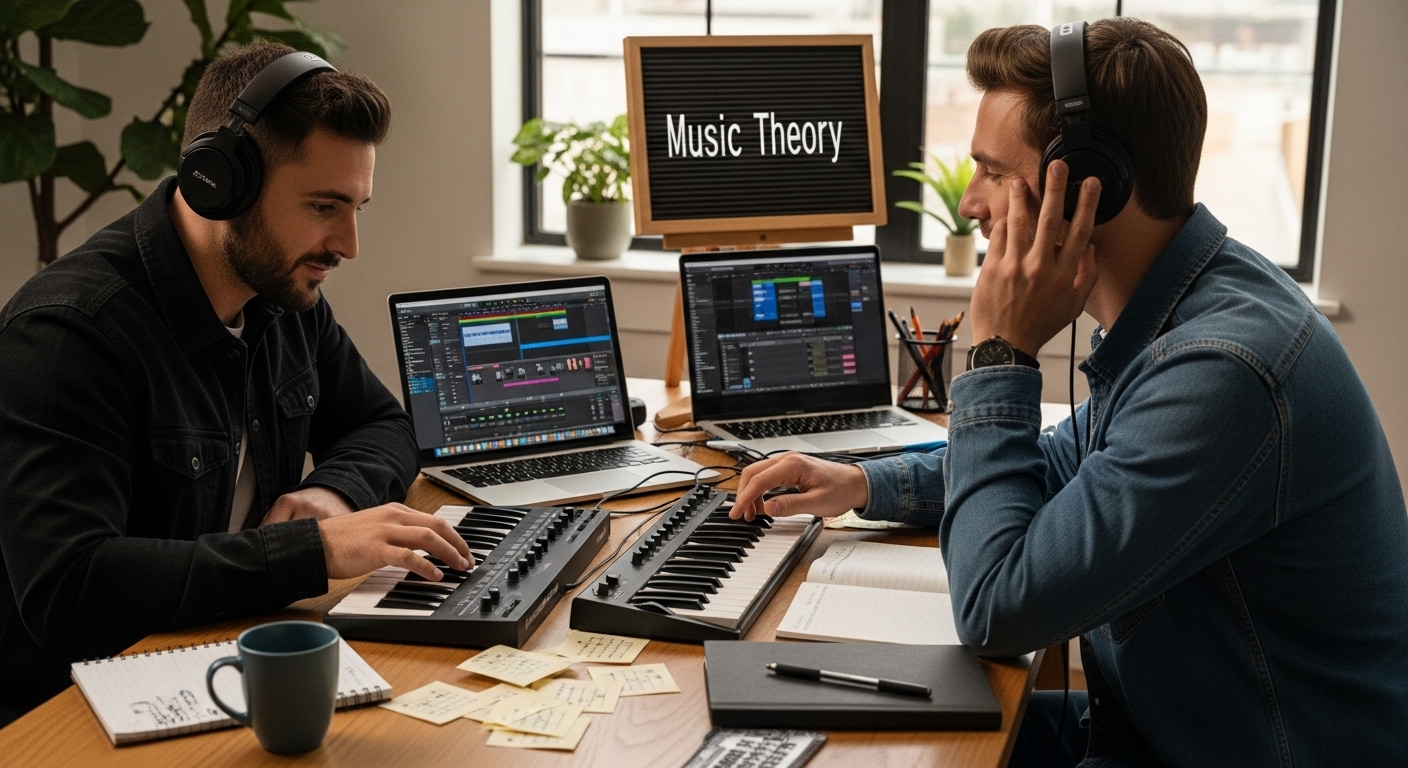
Exploring Sound Design and Sampling Techniques
Sound design and sampling represent the creative core of modern beat production, transforming ordinary audio into extraordinary musical experiences. These techniques allow producers to manipulate, reconstruct, and reimagine sound in ways that push the boundaries of musical creativity.
The Art of Sound Manipulation
Sound design is essentially sonic sculpture, where producers shape audio elements like clay, creating unique textures and sonic landscapes. By applying techniques such as pitch shifting, time stretching, and audio effects, beat makers can turn a simple sound into an entirely new musical element. This process goes beyond mere technical manipulation and enters the realm of artistic expression.
Discover advanced sampling techniques in our comprehensive guide to unlock new creative possibilities. Key sound design principles include:
-
Understanding frequency manipulation
-
Exploring audio effect chains
-
Creating unique sonic textures
-
Developing signature sound characteristics
Sampling as Musical Innovation
According to Encyclopaedia Britannica, sound design has revolutionized music production by providing tools that transform raw audio into complex musical compositions. Sampling, a critical aspect of this process, involves capturing and reusing segments of existing recordings to create new musical works.
Professional beat makers utilize sampling techniques that go far beyond simple audio copying. These techniques include:
-
Chopping and rearranging audio fragments
-
Layering multiple sound sources
-
Applying complex audio effects
-
Creating rhythmic patterns from non rhythmic sounds
The most innovative beat makers view sampling not as copying, but as a form of musical dialogue. They take fragments of sound and recontextualize them, creating entirely new musical narratives that pay homage to original sources while establishing completely unique sonic identities.
Ultimately, sound design and sampling are about imagination. They transform beat making from a technical process into a profound artistic statement, allowing producers to communicate complex emotions through carefully crafted sonic experiences.
How Collaboration Enhances Your Beat Making
Collaboration represents a powerful catalyst for musical growth and creative innovation in beat making. By connecting with other producers, musicians, and artists, beat makers can transcend individual limitations and unlock extraordinary musical potential.
The Power of Collective Creativity
Musical collaboration is not just about working together but creating something greater than individual capabilities. When producers join forces, they bring diverse skill sets, unique perspectives, and complementary techniques that can transform an ordinary beat into an extraordinary composition. Each collaborator introduces their musical vocabulary, technical expertise, and creative intuition.
Learn advanced collaborative techniques in our FL Studio guide to expand your musical network. Key advantages of collaboration include:
-
Exposure to different musical perspectives
-
Cross pollination of technical skills
-
Accelerated learning through direct feedback
-
Breaking creative stagnation
Understanding Collaborative Dynamics
According to research published in Frontiers in Psychology, collaborative music production increases creative output quality and provides significant personal learning opportunities. Successful collaboration requires several critical elements:
-
Clear communication of musical vision
-
Mutual respect for individual contributions
-
Willingness to compromise
-
Openness to constructive criticism
Effective beat making collaborations often emerge through digital platforms, local music scenes, and professional networks. Online communities, social media groups, and music production forums provide unprecedented opportunities for connecting with like minded producers across geographical boundaries.
Ultimately, collaboration transforms beat making from a solitary craft into a dynamic, interactive art form. By embracing collective creativity, producers can push musical boundaries, challenge personal limitations, and create soundscapes that reflect the rich complexity of shared human experience.
Turn Beat Making Theory Into Real Music Today
Are you still unsure what equipment or software truly gives you the edge when starting your journey in beat production? Maybe you find yourself overwhelmed by different DAWs, searching for the right MIDI keyboard, or unsure if understanding music theory really matters when all you want is to create your own unique beats. In the world of beat making, having clear guidance and trusted resources means the difference between frustration and real progress. You deserve straightforward answers on how to build a setup that fits not only hip hop but every genre you dream of producing. Our site delivers step-by-step DAW guides and equipment reviews, tested production tips, and up-to-date tutorials for both total beginners and intermediate producers.
Ready to stop searching and start creating? Explore our home for beat makers and get access to genuine reviews, beat making strategies, music theory tricks, and hands-on guides for Logic, FL Studio, Ableton, and more. Take the next step by checking out our sample beat techniques to put your knowledge into practice right away. Visit us now and unlock your real creative potential.
Frequently Asked Questions
What equipment do I need to start making beats?
To start making beats, you need a reliable computer, a Digital Audio Workstation (DAW) software, a MIDI controller, an audio interface, and studio monitors or high-quality headphones.
How important is a DAW in beat making?
A DAW is essential for beat making as it serves as the central hub where you conceptualize, construct, and refine your tracks. Different DAWs offer unique workflows that cater to various production styles.
What role does a MIDI controller play in music production?
A MIDI controller allows producers to input musical notes and create intricate rhythmic patterns with precision, enhancing creative control over music composition and sound production.
Can I make beats without expensive equipment?
Yes, you can start making beats with basic setups and free or affordable software. While high-end equipment can enhance quality, many successful producers began with minimal tools and gradually upgraded as their skills improved.

